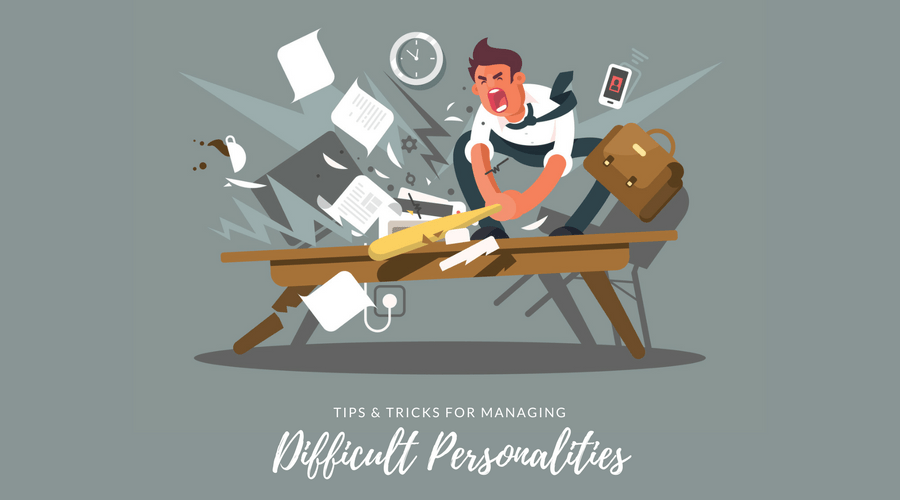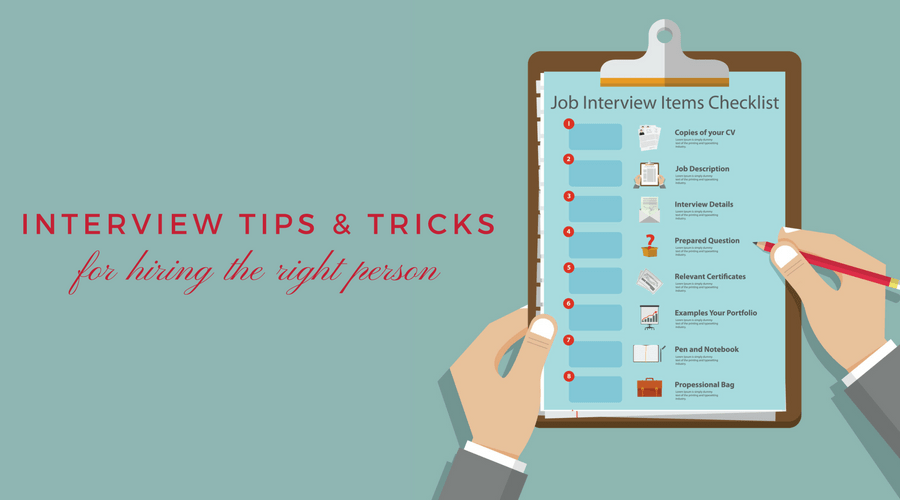Tips & Tricks for Managing Difficult Personalities

As your business grows, you’ll hire more and more employees. That means you’ll have the opportunity to bring people from all different backgrounds and experiences to your company so you can grow and come up with innovative ideas. It also means, however, that you’ll be bringing people with all kinds of personalities on board. Some of those personalities will be more difficult to manage than others.
If someone with a bad personality is really bringing your company down and affecting morale and productivity, you could fire them. But, if they have a lot to offer to your company, you might want to figure out how to manage them so they fulfill their potential and work well within your company.
7 Types of Difficult Employees
There are a lot of difficult personalities you’ll experience in your team. Before writing them off as hopeless, try to figure out why they’re so difficult and how you can work with them.
In this post, you’ll learn how to deal with:
The Narcissist | The Gossip | The Guilt Tripper | The Victim | The Invisible Employee | The Distractor | The Bully
The Narcissist
The Narcissist has an exaggerated sense of their own importance and craves constant attention and praise. They are often self-absorbed and lack any empathy, making them a terrible team player. They’re also usually very sensitive to criticism, which will make it extremely difficult for you to correct the problems they’re causing.
If the Narcissist is a good worker and brings a lot to your company, you’ll have to appeal to their ego a bit to keep them around. That means you’ll want to take extra care to praise them publicly. If you’re asking them to take on extra responsibilities or help someone out, phrase the request in a way that shows how it will serve them personally.
If you have to criticize the Narcissist, make sure you offer praise first. They’ll still probably have a hard time with the criticism, but they’ll take it a little easier.
The Gossip
There’s always going to be gossip and rumors in the workplace. It’s just a fact of life. But, if there’s one person (the Gossip) that enjoys spreading it and goes out of their way to spread it, then you’ll want to nip the problem in the bud.
The first thing you need to do when dealing with the office Gossip is to be careful not to get sucked in yourself. If you’re chatting with your team and someone starts gossiping, excuse yourself from the conversation, change the subject, or tell the person you’re not comfortable talking about the topic. You’ll also be tempted to find out what’s being said about you (it’s human nature), but don’t give in – it will only hurt you.
Then, sit down with the Gossip privately and explain that their gossiping is not helpful to the office. Calling the Gossip out on their behavior will cause them to cut back a bit.
After you’ve talked to the Gossip one-on-one, talk to your whole team and explain that gossip is destructive. By talking about it with the whole company, you’re giving your employees permission to excuse themselves from a gossipy conversation.
The Guilt Tripper
The Guilt Tripper will always let you and their coworkers know if they feel wronged. If they think you gave someone else a perk that they don’t have, gave someone a good assignment that they wanted, or in any way made their job more difficult, they’ll let you know.
Instead of ignoring the Guilt Tripper (or giving into them), help them communicate better. Start by explaining how their comments and reactions are affecting others, because they might not realize that they’re affecting others at all. Then, encourage them to use “I feel” sentences, instead of “You did this to me” statements.
The Victim
The Victim constantly complains and believes that nothing is ever their fault. They tend to be less independent than your other employees and try to draw their coworkers’ attention to their problems. They’ll try to convince people that they aren’t treated fairly or they have more work to do than anyone else.
For example, if something goes wrong with a project they were part of, they’ll try to claim that it’s not their fault. They might say they were left out of conversations, and if their coworkers had included them, nothing would have gone wrong.
When you’re dealing with the Victim, try to be patient with them because they really, truly believe that they’re being victimized.
When they’re telling you how they’ve been victimized, try to empathize with them. But, don’t support their helplessness. You can say something like, “I’m sorry that happened. Is there anything you can do to change the situation or fix it?” You’ll be validating their feelings, but encouraging them to take responsibility and change their circumstances.
You can also try to point out evidence that they’re not being victimized. For example, if they’re complaining that they were left out of a conversation on a project, point out that they were out sick for a few days, but the project still needed to continue.
The Invisible Employee
The Invisible Employee is the one who’s never there or never willing to help out (and always has an excuse for it). They hardly ever get to work on time, they’re often out sick, and they’re always too busy to help their coworkers. Basically, if there’s work to be done – you won’t find this employee.
The Invisible Employee can have a huge effect on everyone else’s motivation and energy because they have to pick up the slack. They might also start to feel like they shouldn’t have to come to work every day, since the Invisible Employee never comes to work (and hasn’t been fired yet).
To deal with the Invisible Employee, find out what’s causing the problem. Maybe they’re having problems at home, and they need a more flexible schedule to help deal with it. Or, maybe they know that this job isn’t the job for them – if that’s the case, work with them to find a position in the company that will suit them better. It might be the case that they just need a different position to motivate them to show up and do the work.
The Distractor
The Distractor doesn’t get a lot of work done and doesn’t really take their job seriously. They’re also always asking their coworkers for help, which can cause everyone else’s productivity to suffer because they have to pick up the Distractor’s slack.
The Distractor is always on a personal call, taking breaks, or doing anything but their job. They’re usually overly friendly and will constantly talk to distract everyone else from the fact that they’re not doing their job.
A lot of the time, the Distractor just needs a little more guidance than your other employees. Set clear expectations and offer them extra training. If they’re still not changing their ways (but they have great potential), consider putting them on a Performance Improvement Plan (PIP).
The Bully
Just because you’re out of high school doesn’t mean the bullying stops. Unfortunately, workplace bullying is a huge problem and can create a hostile work environment for everyone.
According to the Workplace Bullying Institute, “Workplace Bullying is repeated, health-harming mistreatment of one or more persons (the targets) by one or more perpetrators. It is abusive conduct that is:
- Threatening, humiliating, or intimidating, or
- Work interference – sabotage – which prevents work from getting done, or
- Verbal abuse.”
The Bully usually has an issue with authority and likes to manipulate their coworkers. They can put a lot of stress on their targets, which can lead to health problems. The bullied employees will also dread coming to work (and might become Invisible Employees), and their performance might suffer. Eventually, they’ll have no choice but to find a new job, so you risk losing great employees if you don’t handle the Bully.
Take every complaint about bullying seriously and remember that the Bully rarely focuses on just one target. So, if one or two people complain that someone is bullying them, pay attention to see if anyone else is showing signs that they’re being bullied, too.
The best way to deal with the Bully is to let them go.
Conclusion
Every person is different, and as you grow your team, you’re bound to have some employees who are more difficult to manage than others. If an employee with a difficult personality has great potential and you don’t want to lose them, figure out the best way to communicate with them to help them achieve their full potential.


